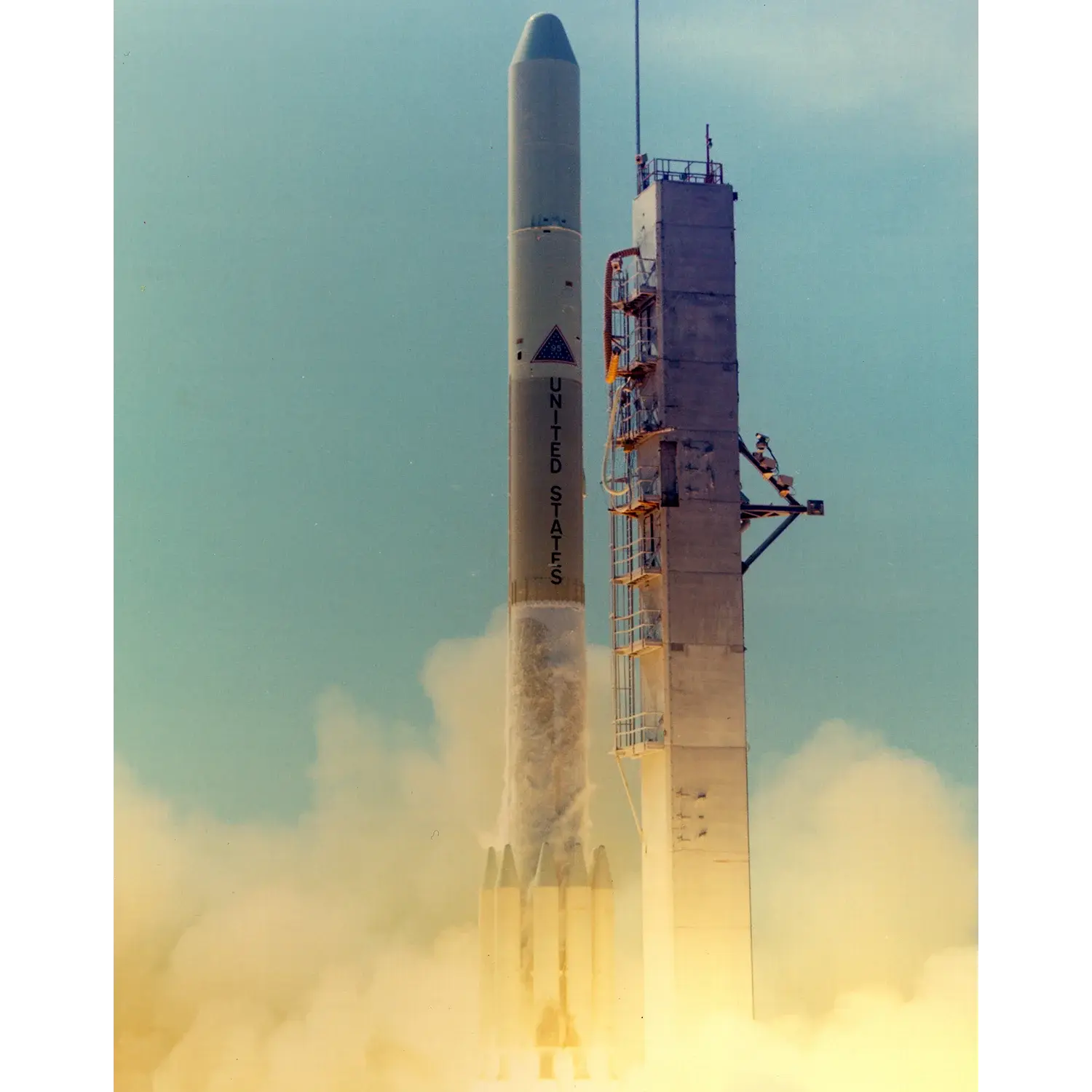Explorer 49 (RAE-B)
Launch Success
Liftoff Time (GMT)
14:13:00
Sunday June 10, 1973
Watch Replay
24/7 Coverage
Mission Details
Explorer 49 (RAE-B)
The Radio Astronomy Explorer B (RAE-B) mission was the second of a pair of RAE satellites. It was placed into lunar orbit to provide radio astronomical measurements of the planets, the sun, and the galaxy over the frequency range of 25 kHz to 13.1 MHz. The experiment complement consisted of two Ryle-Vonberg radiometers (nine channels each), three swept-frequency burst receivers (32 channels each), and an impedance probe for calibration. The experiment antenna package, made of BeCu, consisted of very long traveling wave antennas forming an X configuration: a 229-m upper V-antenna pointed away from the moon; a 229-m lower V-antenna pointed toward the moon; and a 37-m dipole antenna parallel to the lunar surface. There was also a 129-m boron libration damper boom system used to damp out any spacecraft oscillations about the equilibrium position. RAE-B was placed into lunar orbit on 15 June 1973 after a 20 second firing of the solid apogee kickmotor, and began operations on 20 June 1973. Initially only the 37-m dipole antenna was deployed, during which the spacecraft was operated in a 4-rpm spin-stabilized mode with the spin axis in the ecliptic plane normal to the spacecraft-Sun line. After three weeks the dipole booms were retracted, the spacecraft reoriented, the long-V antennas and libration damper were extended, and the dipole was redeployed. The lower V-antenna was initially extended to 183 m during the first 16 months of flight and was extended to its full 229-m length in November 1974. The lunar orbit and position of the Earth as a radio source imposed periodicities on the observations of 29.5 days (the lunar synodic month) and 24.8 hours (the interval between consecutive sweeps of a given Earth geographic position past the Moon. Contact was lost in August 1977, the orbiter presumably crashed some time after this.
Trans Lunar Injection
1 Payload
328 kilograms
Rocket

Launch Site
Stats
Delta 1000 Series
4th
Mission
2nd
Mission of 1973
1973
42nd
Orbital launch attempt
